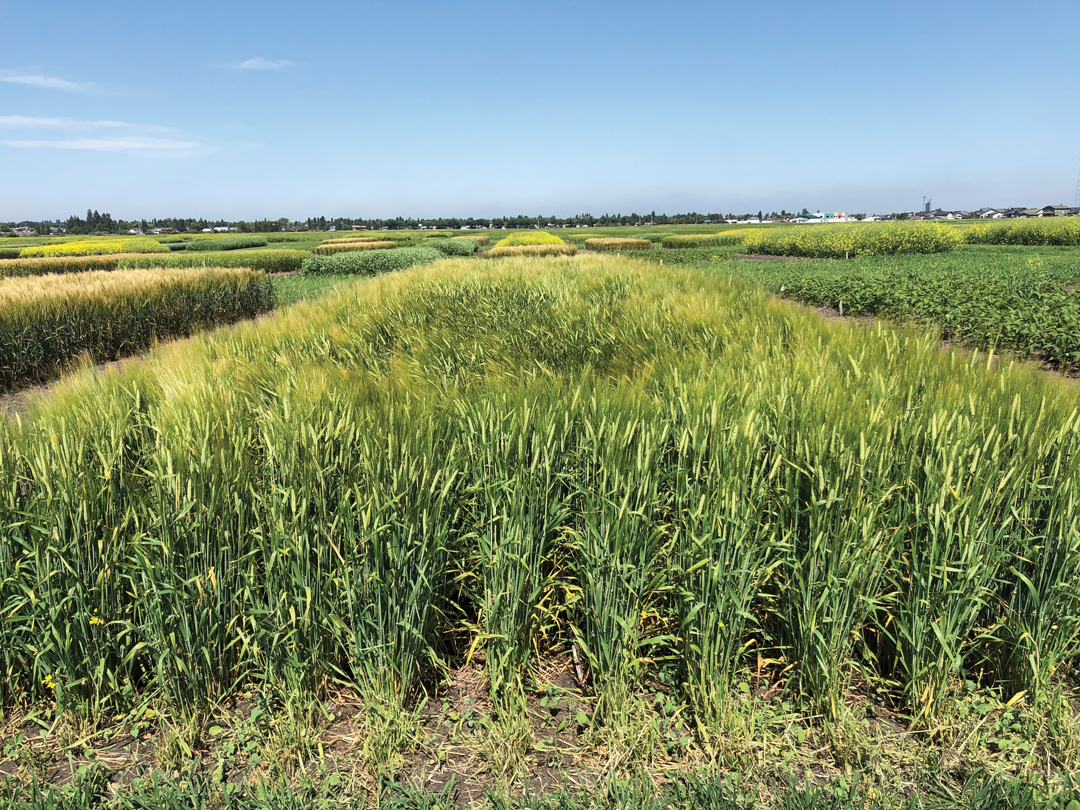MIXED MESSAGES
BY TRUDY KELLY FORSYTHE • PHOTO COURTESY OF SHERI STRYDHORST
Research has long established the benefits of diversified crop rotations. However, most Prairie farms keep their rotations short and simple, typically growing cereals and oilseeds on an intensive basis. Many farmers agree they need to diversify their rotations, but it’s tricky to find one that consistently delivers better returns than what they already grow.
Research conducted by the Western Grains Research Foundation’s (WGRF) Integrated Crop Agronomy Cluster aims to change this. Its Resilient Rotations project conducted field studies that featured six varied crop rotations at seven sites in the northern and southern Prairies between 2018 to 2022 and Red River Valley from 2019 to 2022. Project funders include WGRF, Agriculture and Agri-Food Canada (AAFC) and Alberta Grains.
The project was led by Kui Liu, agronomist and research scientist at the Swift Current Research and Development Centre. A control rotation of traditionally recommended crops particular to each zone anchored the study. One rotation intensified the use of pulse or oilseed crops while another diversified with multiple pulses, winter cereals or both. A canola-heavy, market-driven rotation focused on economic return. In contrast, a high-risk rotation focused on new crop species. The project also included a soil-health rotation that incorporated green manure intercrops and winter cereals.
With four years of data, the team assessed system performance at each site by measuring four key areas: yield and yield stability, nitrogen-use efficiency, net economic return and precipitation-use efficiency.
The research justified existing practices and revealed fundamental truths such as the optimum rotation depends on a farmer’s goals, said Sheri Strydhorst, an Alberta agronomist and research scientist involved in the project. The market-driven rotation of canola planted three of four years did indeed deliver high economic returns. However, it also had lower nitrogen-use efficiency and higher greenhouse gas emissions. If nitrogen-use efficiency is the goal, diversified rotations with more pulses and winter cereals proved best.
“When you have more pulse species in the rotation, you get better nitrogen-use efficiency,” said Strydhorst. “If you grow a variety that isn’t well adapted to your environment, like soybean at Beaverlodge, it’s not going to help your rotation. When you don’t have harvestable yield in one of four years, it’s a big kick to the yield over that four-year period and the economic returns on that farm.”
Farmers should consider striking a balance between productivity, economic returns and environmental impacts when they plan crop rotations, said Liu. “Diversifying your rotation with a pulse crop is probably our primary recommendation because it could enhance the ecosystem services.”
WGRF recently received confirmation from AAFC it will receive funding for a second phase of the project. The additional research period will allow the researchers to assess system resilience as well as measure changes in soil organic matter. Further crop seasons will also allow the project to assess the resistance of various rotations to disease, pests and environmental stresses.
“We know for crop rotation studies, the first rotation cycle is considered a transition period,” said Liu. “The true rotation effects are often masked by the previous cropping systems so with additional funding we will be more confident when recommending the best cropping system for each ecozone.”
For more information, visit wgrf.ca/resilient-rotations-factsheet.







Comments